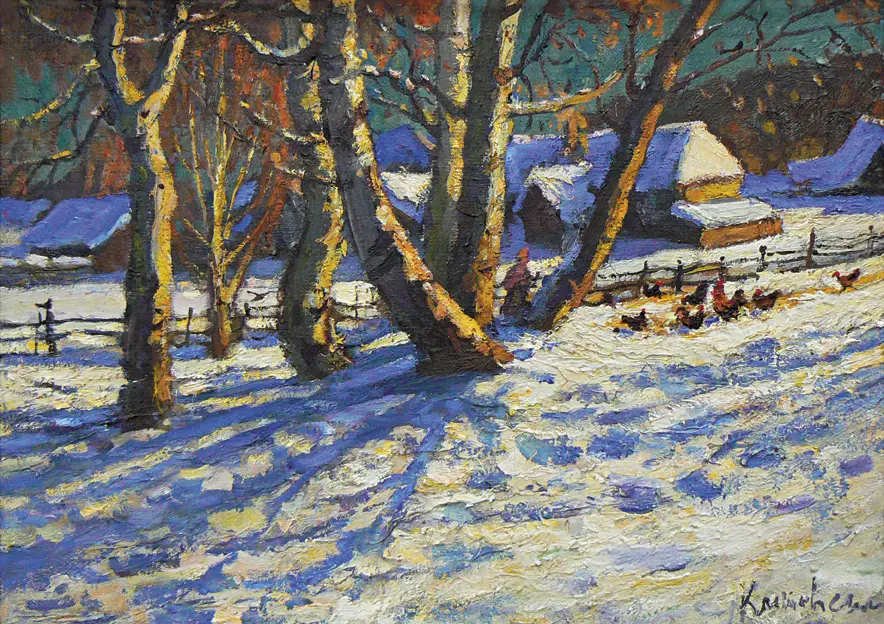Starting in January 2018, the Irkutsk Regional Art Museum held an exhibition titled, “Родная Земля,” (translated as “Homeland,”) celebrating the works of Anatoly Kostovsky. A native Irkutsk painter, Kostovsky graduated from the Irkutsk Art College in 1956 and built his career in realism around the diversity of the Irkutsk region, featuring local people, culture, and nature as subjects in his paintings.
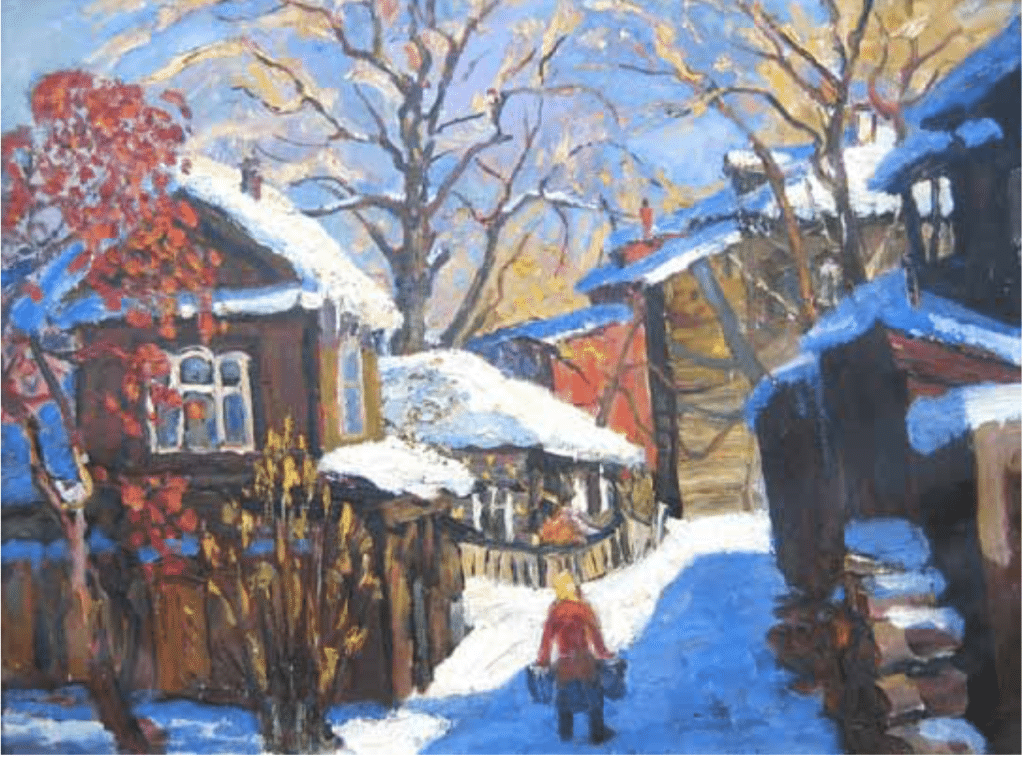
While for many outside Russia, the image of Siberia consists of blank, neverending space, in actuality, the region is home to dozens of nationalities, landscapes, and cultures. The Homeland exhibit sought to challenge such representations, using Kostovsky’s unique ability to appreciate and capture Siberia’s diversity through art, to highlight such variety. Kostovsky’s works are known for embodying feelings of patriotism and spirituality in Russia. The rhetoric of the exhibit’s curation produced a similar effect, creating the space and opportunities for viewers to observe and appreciate their homeland.
The museum’s main exhibition hall drew Kostovsky’s brightly colored oil paintings and sketches all into one space, exposing a plethora of emotions, activities, beauties, and realities which compose the Irkutsk region. While Kostovsky’s works consist of a recognizable style, his paintings were intentionally arranged to emphasize their differences.
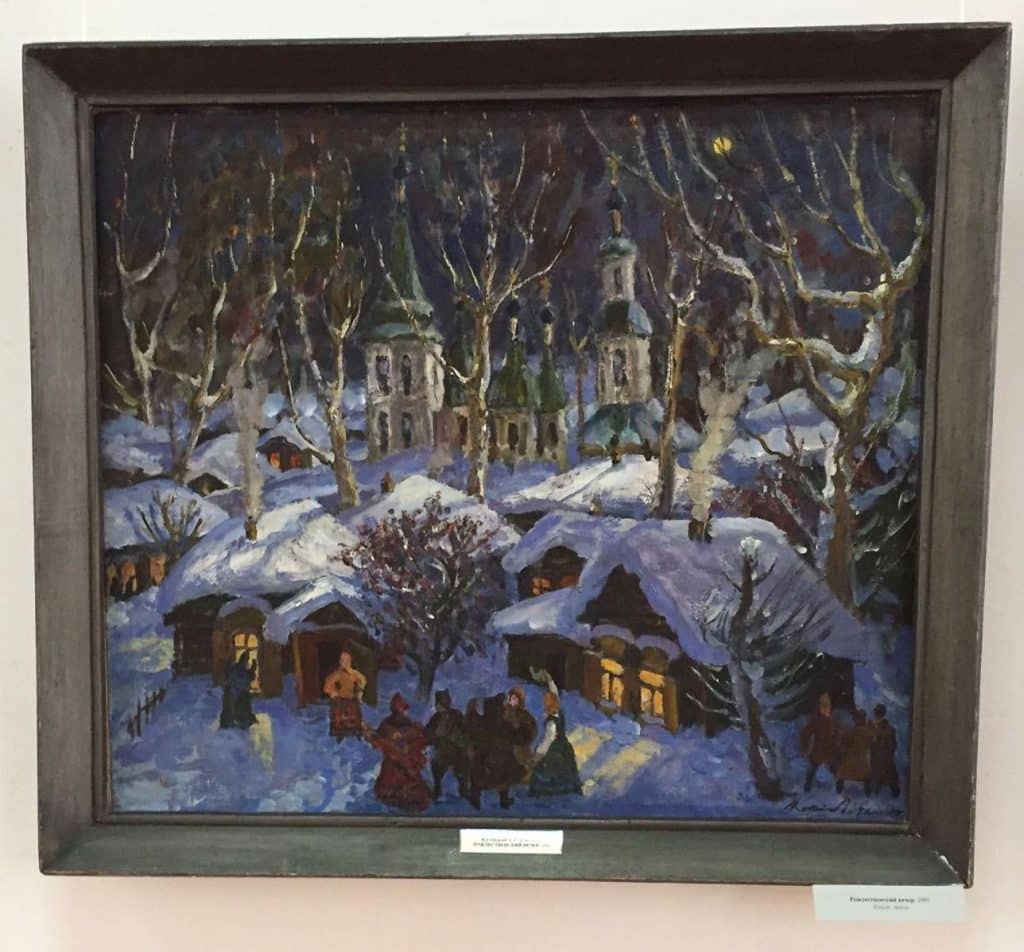
Irkutsk and its surrounding lands were displayed in all four seasons. “Christmas Evening,” a scene featuring one of Irkutsk’s many churches using cool winter tones, hung next to Kostovsky’s portrayal of the “Altai Gobi,” a bright summer scene with golden hues. These were also balanced with “Fall in Irkutsk,” and “Spring,” giving viewers insight into the varying seasonal experiences one finds living in Siberia.
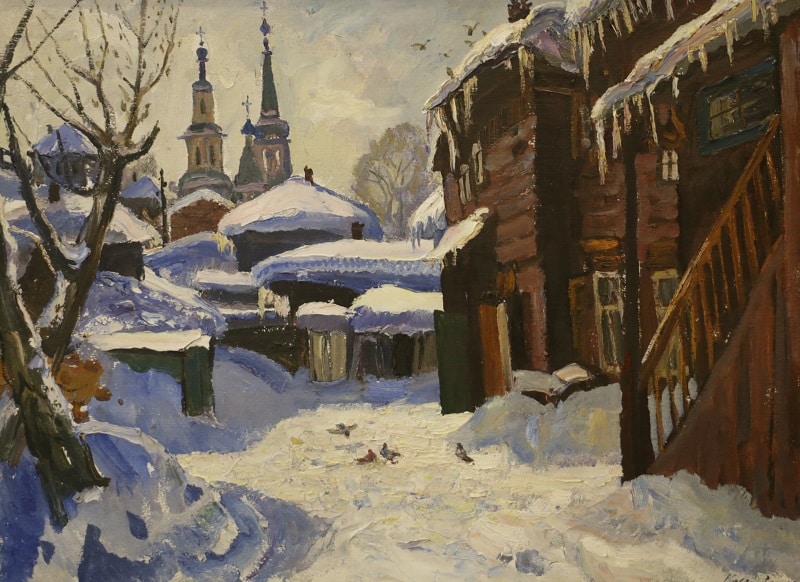
Life within the city was portrayed by paintings such as Kostovsky’s “Irkutsk Yard,” which depicts the wooden homes originally built by Decembrist exiles which still stand and compose the city today. “Angarsk Bridge,” on the other hand, further reveals the many colorless, Soviet-built concrete structures also existing within the city. “Ice Cream Cafe” provides a window into an energetic Irkutsk social gathering, whereas “Twilight in the Workshop” emphasizes feelings of calmness and solitude.
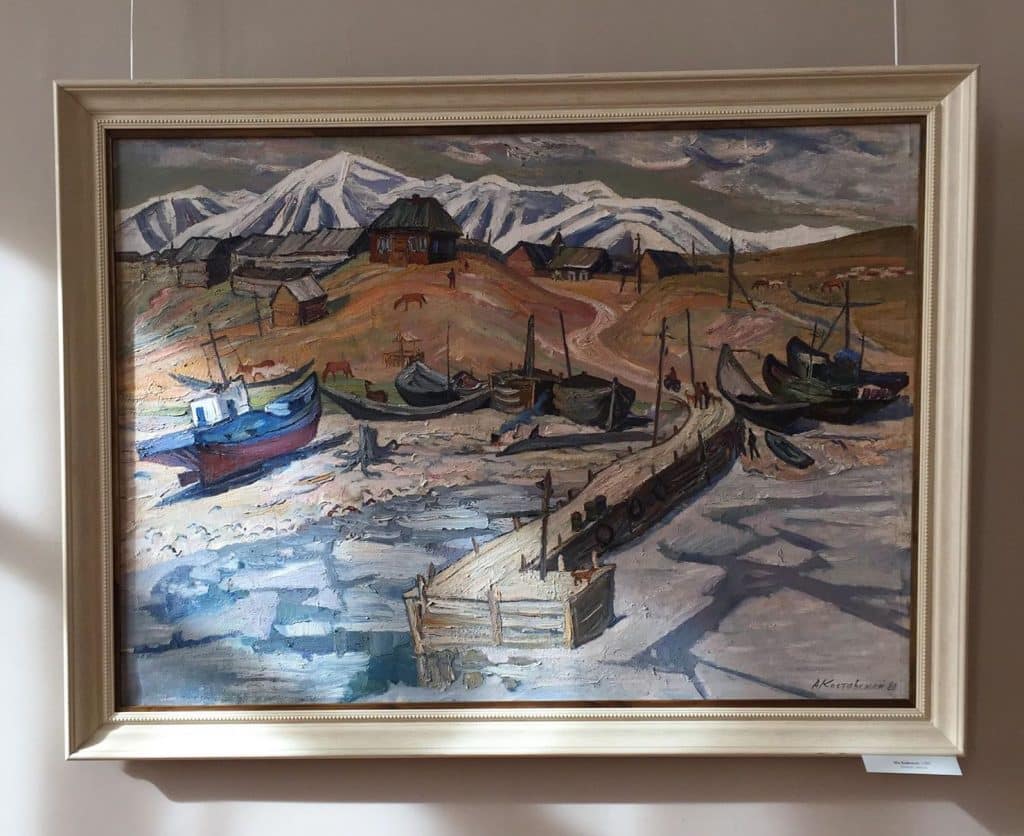
Beside Kostovsky’s cityscapes, viewers found endless depictions of Siberia’s environment. “On Baikal” showcased the magical, wild character of the land, while images such as “Spring Ice” also expose the more simple, natural character of the region’s taiga.
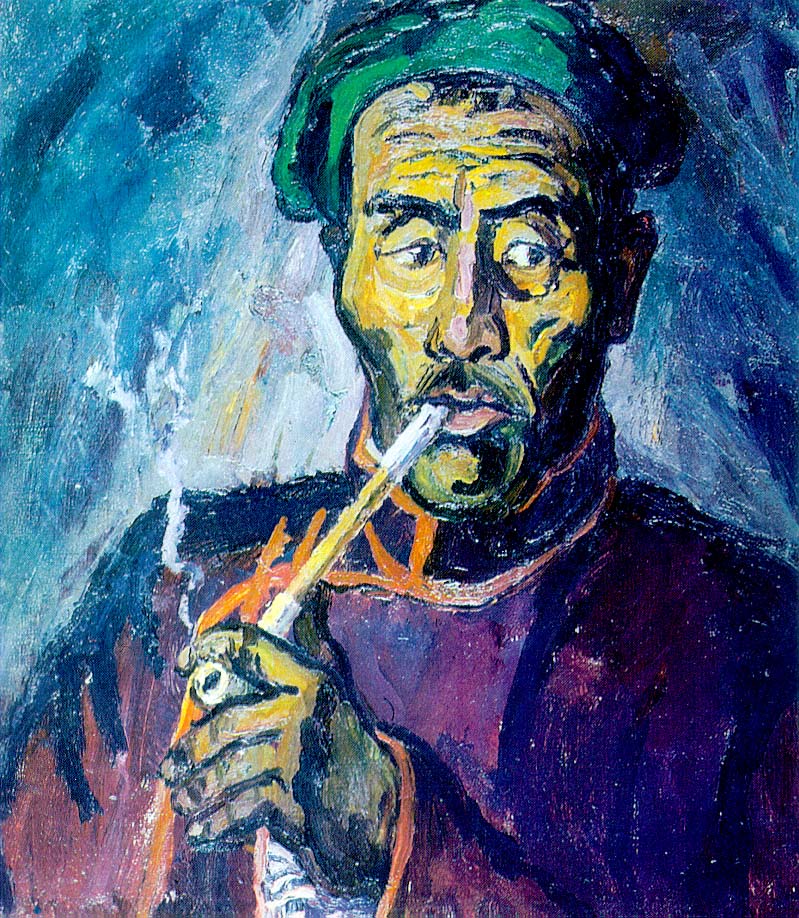
Further juxtapositions reveal cultural differences; portraits showcasing Russian veterans of war hung beside those featuring different ethnic groups in and around Irkutsk, such as “Evenk, Portrait of a Hunter,” or “Mongol with a Pipe.”
While pointing to the wonders and beauties of his Siberian homeland, Kostovsky did not choose to focus only on categorically beautiful subjects; his paintings went as far as to recreate the emotion and reality of scenes which are normally excluded from media or communication, such as his depiction of a small veteran’s burial site, in “Graves of Fathers,” or the lingering presence of a “Destroyed Church.”
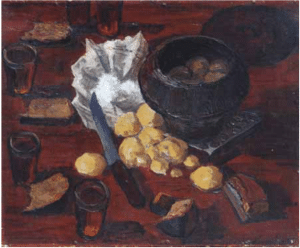
The successful organization of diverse Siberian images into one exhibit gave rise to the theme of unity, as, while Kostovsky’s paintings portrayed a variety of moods, colors, and emotions, they compliment each other, bringing a singular allure and wonder to the many different faces and places in Siberia.
Interestingly, the idea of unity promoted in the exhibit also overlapped with a local ice trek, “Meeting with Baikal,” which was organized in March with the goal of promoting interethnic and intercultural education. Further, the exhibit was in time for the country’s presidential elections, potentially serving as a reminder to residents of their ability to remain unified, despite differences.
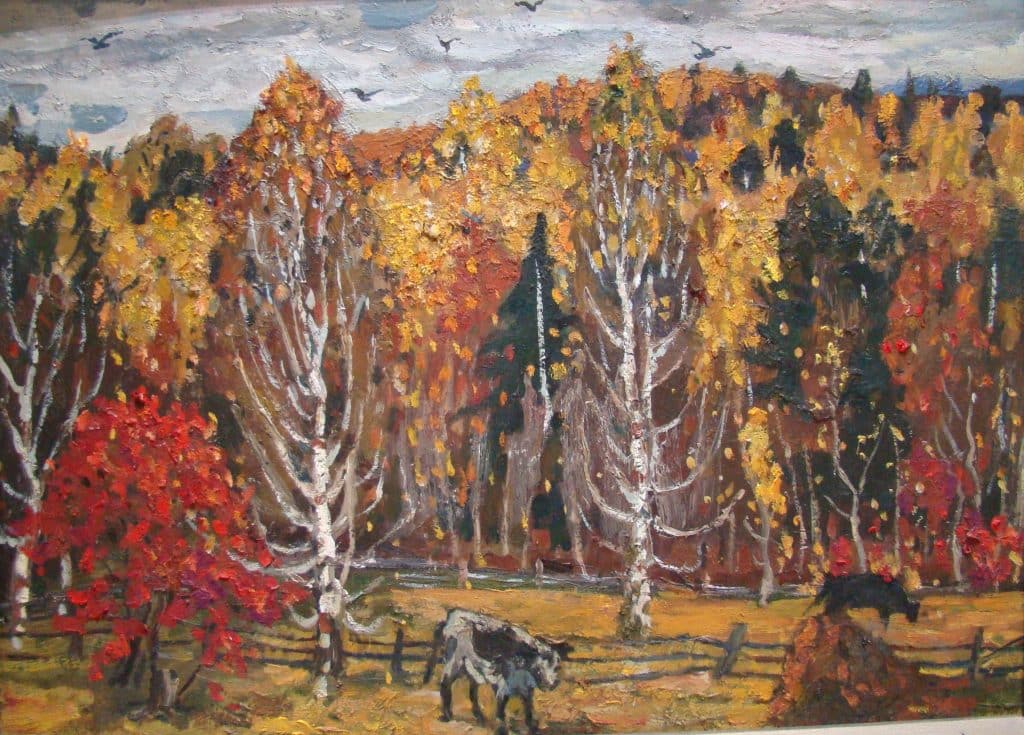
While noted for its beauty and emotional effect on viewers, the Irkutsk Regional Artist Museum’s Homeland did not solely choose to display solely positive or brightly beautiful images. Rather, by recreating the Irkutsk region in its entirety, a more complex, complete, and true beauty emerged, providing local viewers with an opportunity to view their own backyard in its entirety – an opportunity which is often disrupted by the routines of everyday life – and leaving an impression of patriotic, unifying, and genuine character.


